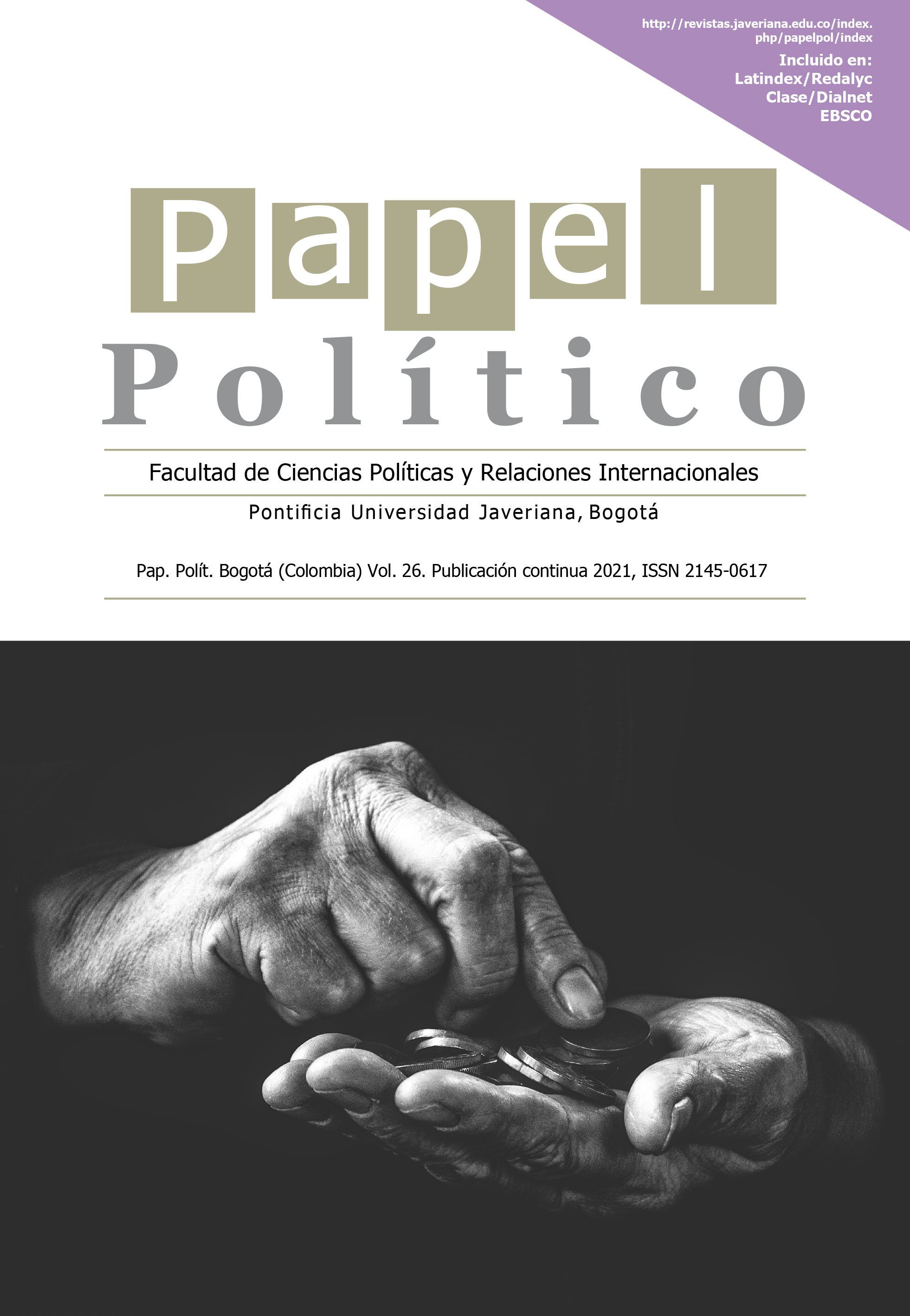Resumen
Para comprender los obstáculos que enfrentan los procesos de construcción de la paz es importante analizar lo básico: el lenguaje. La forma en que se trata a los individuos importa porque determina su agencia para narrar sus historias, y explorar libremente sus identidades durante la etapa posterior al conflicto. Después de estudiar la “zona gris” de Primo Levi, se hace evidente la relevancia de estudiar el intersticio entre las víctimas y los victimarios. El oxímoron hace visible la necesidad de repensar los conceptos para superar el obstáculo que representa durante los procesos de reintegración de los excombatientes. En este artículo se intenta contribuir al desencadenamiento de conceptos estáticos como “víctima” y “victimario” en los períodos de transición. Éstos, bajo la premisa de que las nociones deben ser cinéticas de acuerdo con el proceso de transición del que forman parte. Se ha comprobado que los conceptos estáticos tienen una disonancia con las etiquetas ancladas a un pasado violento y complejo durante los esfuerzos de consolidación de la paz. Por consiguiente, el artículo enmarca el contexto de la justicia de transición analizando sus objetivos y mecanismos especiales, al tiempo que revisa lo que se entiende por las palabras “víctimas” y “victimarios”. El objetivo final es problematizar las conclusiones y contrastarlas con el concepto de violencia. Principalmente, porque es la violencia la que crea y media la relación entre las víctimas y los victimarios. El artículo forma parte de un conjunto de tres ejercicios teóricos y enmarca el contexto para avanzar en los primeros pasos para reconocer y superar el estigma impuesto a los principales actores del conflicto. Es la propuesta teórica para profundizar en cómo hacer más alcanzable la reconciliación.
Bar-Tal, D., Chernyak-Hai, L., Schori, N., & Gundar, A. (2009). A Sense of Self-Perceived Collective Victimhood in Intractable Conflicts. International Review of the Red Cross, 91(874), 229-258.
De Greiff, P. (2009). En Rangel Suárez A. (Ed.), Justicia y paz ¿Cuál es el precio que debemos pagar ? (1a ed.). Bogotá: Intermedio Editores.
Drumbl, M. A. (2012). Reimagining Child Soldiers in International Law and Policy. Oxford: Oxford University Press.
Espejo, M.P. (2020) Responsibility to Reconcile: Adopting New Terms to Foster Recognition. Manuscript submitted for publication.
Espejo, M.P (2020). Recognizing Identities: Using language to Prevent Resentment. Manuscript submitted for publication.
Ferguson, N., Burgess, M., & Hollywood, I. (2010). Who are the victims? Victimhood Experiences in Post-Agreement Northern Ireland. Political Psychology, 31(6), 857-886.
Fisas, V. (2011). Introducción al desarme, desmovilización y reintegración (DDR) de excombatientes. Quaderns De Construcció De Pau, 24, 1-22.
Fisher, K. (2013). Transitional Justice for Child Soldiers: Accountability and Social Reconstruction in Post-Conflict contexts. Basingstoke: Palgrave Macmillan
Galtung, J. (1969). Violence, Peace and Peace Research. Journal of Peace Research, 6 (3), Pp.
167-191
Galtung, J. (2003). Paz por medios pacíficos. Paz y conflicto, desarrollo y civilización. Bilbao: Bakeaz.
Gibu, S. (2016). Sobre el Resentimiento y el Perdón. Revista de Filosofía Open Insight, 7 (12), 11. doi:10.23924/oi.v7n12a2016.pp11-32.174.
Grossberg, L. (2003) “Identidad y estudios culturales: ¿no hay más que eso?” en S. Hall y P. du Gay (eds.), Cuestiones de identidad cultural. Buenos Aires, Amorrortu: 148 – 180.
Hayner, P.B. (1994). Fifteen Truth Commissions 1974-1994: A Comparative Study. Human Rights Quarterly 16 (4), pp. 597-655
Herman, J., & Martin-Ortega, O. (2012). Beyond justice versus peace: transitional justice and peacebuilding strategies. In Rethinking Peacebuilding (pp. 58-73). Routledge.
Honneth, A. (2006). El reconocimiento como ideología. Isegoría, 0(35), 129-150.doi:10.3989/isegoria.2006.i35.33
Kosinski, A. (2015). Una manera de responder ¿quién soy?: la identidad narrativa de Ricoeur. Avatares filosóficos (2). Actualidad Académica. Revista del Departamento de Filosofía. Universidad de Buenos Aires. Buenos Aires. Pp. 213-221.
Levi, P. (1989). Los hundidos y los salvados. Muchnik Editores, Barcelona.
Margalit, A. (1997). La sociedad decente (1a ed.). Barcelona, España: Paidós.
Marrades, J. (2004). Resentimiento y verdad sobre la réplica de Améry a Nietzsche. Revista Isegoría, 31
Payne, L. A., & Paredes, J. (2009). Testimonios perturbadores ni verdad ni reconciliación en las confesiones de violencia de estado (1a ed.). Bogotá: Universidad de Los Andes.
Quinn, J. R. (2007). Social Reconstruction in Uganda: The Role of Customary Mechanisms in Transitional Justice. Human Rights Review. pp. 389-407
Ricoeur, P. (1996) [1990]. Sí mismo como otro, trad. A. Neira Calvo, Madrid: Siglo XXI.
Servaes, S. y Birtsch, N. (2008). Engaging with Victims and Perpetrators in Transitional Justice and Peace Building Processes. International Workshop Bonn: Alemania
Sooka, Y. (2006). Dealing with the past and transitional justice: building peace through accountability. International Review of the Red Cross. 88 (862) pp. 311-325
Teitel, R. (2003). Genealogía de la justicia transicional. Harvard Human Rights Journal, 16, 69- 94.
Tilly, C. (2007). Violencia Colectiva. Barcelona: Hacer.
UN General Assembly, Rome Statute of the International Criminal Court (last amended 2010), 17 July 1998, ISBN No. 92-9227-227-6, available at https://www.refworld.org/docid/3ae6b3a84.html
Uprimny, R. (2005). Justicia Transicional en Perspectiva comparada: Procesos transicionales, formas de justicia transicional y el caso colombiano. DeJusticia: Bogotá https://www.dejusticia.org/wp-content/uploads/2017/04/fi_name_recurso_53.pdf?x54537
Vahagn, A. (2013). Recognition, Responsibility and Reconciliation: The Trinity of the Armenian Genocide. Europa Ethnica 70 (3-4), 77-86.
Van Boven, T (1996). Van Boven Principles. Special Rapporteur for the United Nations.
Van Zyl, P. (2005). Promoviendo la justicia transicional en sociedades post-conflicto. Justicia Transicional: Manual Para América Latina.
Walker, M. (2006). Moral Repair: Damages to Trust. London, UK: Cambridge University Press, pp. 72-109
Wenzel, M., Okimoto, T. G., Feather, N. T., & Platow, M. J. (2008). Retributive and Restorative Justice. Law and Human Behavior, 32(5), 375-389.

Esta obra está bajo una licencia internacional Creative Commons Atribución 4.0.
Derechos de autor 2022 María Paula Espejo


